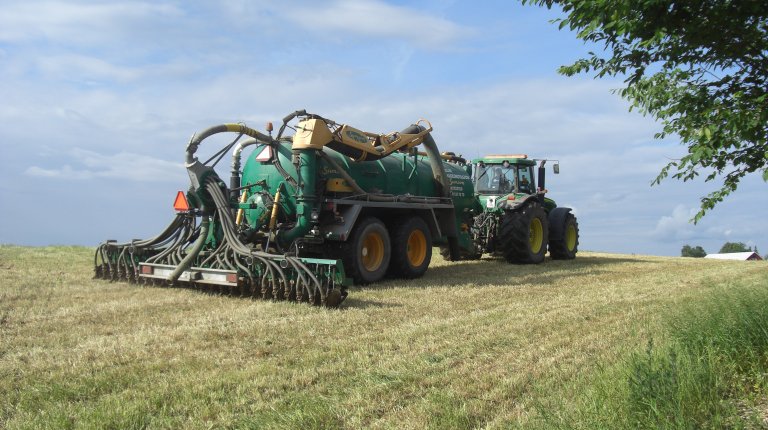
Grassland and Livestock
Ruminant livestock production based on grassland is the backbone of Norwegian agriculture, generating nearly half of the gross income of the agricultural sector. We aim to build knowledge that promotes the competitiveness of conventional as well as organic forage-based food production in Norway.
The main research areas are in the fields of agronomy, forage quality, plant responses and adaptation to climate and cultivation methods, grazing management, animal welfare, environmental effects of forage-based livestock production, and the development and optimisation of conventional and organic forage-livestock systems. Key research areas are listed below.
Agronomy
- The effect of soil management, such as drainage, tillage and machinery use, on physical, chemical and biological conditions in soil under different climatic conditions.
- How plant growth is affected by, e.g., nutrient availability, grassland renovation, seed mixtures (species and varieties), harvesting frequency and biological nitrogen fixation.
- Efficient utilisation of animal manure with the focus on nutrient content, environmental issues and technology.
- Cultivation methods aimed at minimising losses of nutrients and greenhouse gasses.
- Systems research focusing on environmentally friendly and cost-efficient production systems.
Forage and feed quality
- Understanding, describing and modelling how feed quality is affected by botanical composition (species and varieties), nutrient supply, climate, phenology and season, as well as by grazing, harvesting and conservation practices. Special emphasis is placed on fibre and protein quality, and hygienic quality/feed security of conserved forages.
Plant responses and adaptation to climate and management
- Winter survival is crucial for grassland and forage production in the Nordic region. Successful overwintering requires knowledge about plant responses and adaptation of plant material to current and projected climate changes, i.e. increased temperature and precipitation, especially in spring and autumn, more intense precipitation events, and new challenges relating to temperature and photoperiod interactions in autumn.
- A prolonged growing season will require adaptation of plant material and management systems that exploit spring production and regrowth capacity. Summer droughts may also become a problem in future.
Livestock
- Animal behaviour as a tool for improving production systems.
- The relationship between feed nutrient contents of, e.g., vitamins and minerals, and animal health.
- Infield and outfield grazing management for improved production and feed utilisation.
- Forage quality and feed utilisation, and the relationship between forage properties, feeding, product quality and food security.
- The utilisation of macro-algae and macro-algae fractions as feed and feed supplements.
- The relationship between forage quality and feeding and environmental impacts, such as nitrogen utilisation and greenhouse gas emissions.
Organic forage and livestock production
Specific challenges related to the principles of organic farming in the fields of:
- Feed production
- Feeding, feed utilisation and animal production
- The relationship between production methods and product quality
- Animal welfare
Biorefining of forage crops
This is a new research area where we will utilise our knowledge of grassland crops, forage quality and feed utilisation to build expertise on cultivation, harvesting, processing methods and quality evaluation of biorefined products of grassland crops. Special emphasis will be placed on biorefining protein as a feed source for monogastric animals.

.jpg)
